How Long Does a Drill Battery Last on One Charge?

When it comes to using a power drill, having a reliable battery that lasts for a decent amount of time is crucial. Whether you’re a professional contractor or a DIY enthusiast, knowing how long a drill battery will last on a single charge can help you plan your work accordingly and avoid any unexpected interruptions.
The duration of a drill battery’s charge can vary depending on several factors. The capacity of the battery itself plays a significant role in determining how long it will last. Batteries with higher capacity ratings generally provide longer runtimes. Additionally, the efficiency of the drill itself can influence battery life. Some drills are designed to be more energy-efficient than others, allowing them to provide longer operating times.
Another factor that affects a drill battery’s runtime is the intensity of the work being performed. For simple drilling tasks, the battery may last a relatively long time. However, if you’re using the drill for heavy-duty applications such as driving large screws or drilling into hard materials, the battery will likely drain faster.
It’s worth noting that the type of battery used in the drill also plays a role in determining its runtime. Lithium-ion batteries, for example, are known for their longer lifespan and higher energy density compared to traditional nickel-cadmium (NiCad) batteries. This means that drills with lithium-ion batteries will generally last longer on a single charge.
Factors Affecting Drill Battery Lifespan
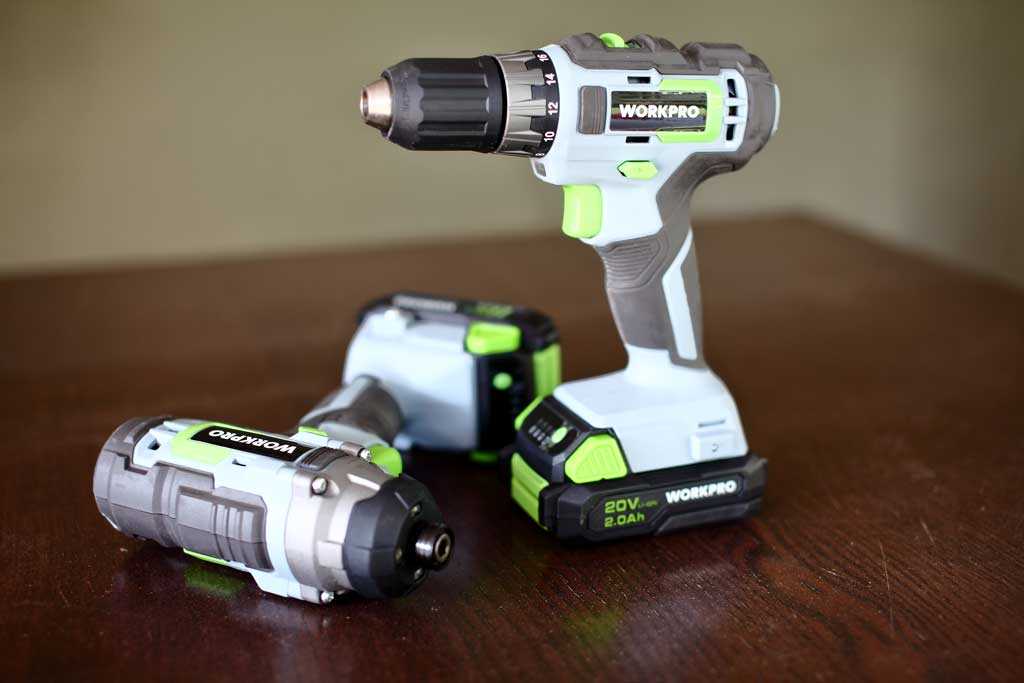
The lifespan of a drill battery can greatly vary depending on several factors. While some batteries may last for many years, others may require replacement after only a short period of use. Understanding the factors that affect drill battery lifespan can help users optimize the performance and longevity of their batteries.
Battery Type
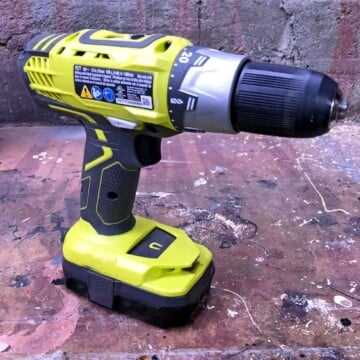
The type of battery used in a drill can have a significant impact on its lifespan. The most common types of drill batteries include nickel-cadmium (Ni-Cd), nickel-metal hydride (Ni-MH), and lithium-ion (Li-ion) batteries. Li-ion batteries typically have a longer lifespan compared to Ni-Cd and Ni-MH batteries. These newer battery technologies offer improved energy density and can be recharged more times without significantly degrading their performance.
Usage Frequency
The frequency of use can also affect the lifespan of a drill battery. Regularly using a drill requires the battery to undergo more charge and discharge cycles, which can gradually decrease its overall capacity. Intensive and continuous use can further accelerate wear and tear, reducing the battery lifespan.
Charging Practices
The way a drill battery is charged can impact its lifespan. Overcharging or leaving the battery connected to the charger for extended periods can lead to overheat and premature aging. It is important to follow the manufacturer’s recommendations for charging times and practices to ensure optimal battery lifespan. Additionally, using a compatible and high-quality charger can also contribute to a longer battery lifespan.
Environmental Conditions
The environment in which a drill battery is used can also affect its lifespan. Extreme temperatures, both hot and cold, can influence the performance and longevity of the battery. Exposure to moisture, dust, and other debris can also lead to premature wear and corrosion. Storing the battery in a cool, dry place when not in use can help prolong its lifespan.
Battery Maintenance
Proper maintenance of the drill battery is essential for maximizing its lifespan. Regularly cleaning the battery contacts and ensuring they are free from dirt or corrosion can help maintain optimal electrical connections. It is also important to avoid dropping or subjecting the battery to physical damage, as this can affect its internal components and decrease its lifespan.
Overall Battery Quality
The quality and origin of the battery itself can play a role in its lifespan. Batteries from reputable manufacturers often undergo rigorous testing and use high-quality components, resulting in a longer lifespan. On the other hand, low-quality or counterfeit batteries may degrade quickly and provide subpar performance.
By considering these factors and taking proactive steps to optimize battery usage and maintenance, drill owners can help extend the lifespan of their batteries and maximize their investment.
Understanding Battery Capacity and Voltage
When it comes to drill batteries, understanding their capacity and voltage is crucial in determining how long they can last on a single charge. The battery capacity refers to the amount of energy a battery can store, while voltage measures the electric potential difference between two points.
Battery Capacity
The battery capacity is typically measured in ampere-hours (Ah) or milliampere-hours (mAh). This measurement represents the amount of current a battery can deliver over a specific period of time. For example, a 2Ah battery can provide a constant current of 2 amps for 1 hour, or 1 amp for 2 hours.
Higher battery capacity generally translates to longer run times between charges. However, it’s important to note that other factors such as the drill’s power consumption and the work being performed also affect battery life. High-power tasks will drain the battery faster than low-power tasks.
Battery Voltage
Battery voltage measures the electric potential difference. It is typically measured in volts (V). The voltage rating determines the power output of the battery and its compatibility with specific power tools. Different drills may have different voltage requirements, so it’s essential to match the battery voltage to the drill’s specifications.
A higher voltage usually means more power and faster performance. However, higher-voltage batteries are often bulkier and heavier, which may affect the drill’s overall weight and maneuverability.
Choosing the Right Battery
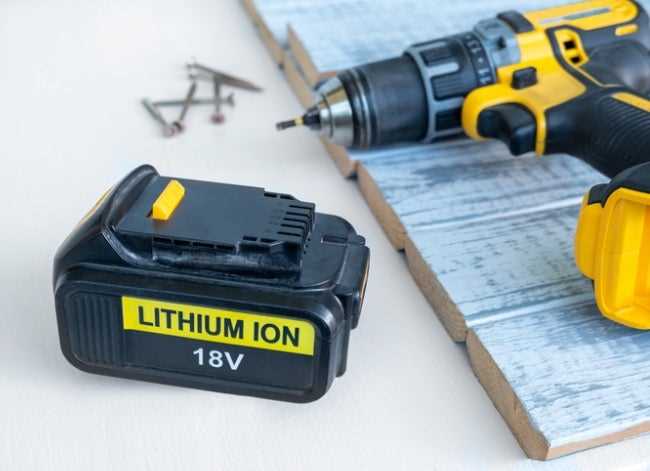
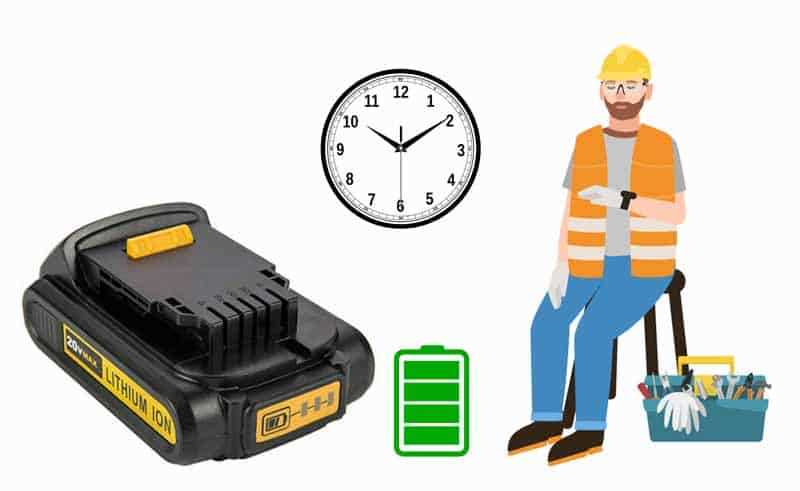
When selecting a battery for your drill, it’s essential to consider both the capacity and voltage. A balance between the two is crucial to strike a good trade-off between run time and power output.
For light to moderate tasks, a battery with a lower capacity may be sufficient, while for heavy-duty tasks, a higher-capacity battery may be necessary to maintain satisfactory run times between charges.
Moreover, ensuring the battery’s voltage matches the drill’s specifications is vital to ensure compatibility and optimal performance.
Battery Care and Maintenance
Proper care and maintenance of your drill battery can extend its lifespan and overall performance. Regularly charging the battery, avoiding overcharging, and storing it in a cool and dry place can help improve its longevity.
Furthermore, it’s important to follow the manufacturer’s instructions regarding battery usage, storage, and charging to ensure the best possible performance and longevity.
| Measurement | Description |
|---|---|
| Battery Capacity | The amount of current a battery can deliver over a specific time period, measured in ampere-hours (Ah) or milliampere-hours (mAh). |
| Battery Voltage | The electric potential difference measured in volts (V), which determines the power output and compatibility with specific power tools. |
| Choosing the Right Battery | A balance between capacity and voltage is important for optimal run time and power output for different tasks. |
| Battery Care and Maintenance | Proper care, charging, and storage can extend the battery’s lifespan and performance. |
Average Battery Life for Different Drill Brands
When it comes to choosing a drill, one important factor to consider is the battery life. After all, you want a drill that will be able to handle your projects without constantly needing to be recharged. Here is a comparison of the average battery life for different drill brands:
1. Black & Decker
- Compact Drills: On average, Black & Decker compact drills offer a battery life of around 1-2 hours per charge.
- Heavy-Duty Drills: Black & Decker heavy-duty drills have a longer battery life, typically lasting between 2-4 hours per charge.
2. Dewalt
- Compact Drills: Dewalt compact drills generally have a battery life of 2-3 hours per charge.
- Heavy-Duty Drills: Dewalt heavy-duty drills offer a longer battery life, averaging around 3-5 hours per charge.
3. Makita
- Compact Drills: Makita compact drills provide a battery life of approximately 2-4 hours per charge.
- Heavy-Duty Drills: Makita heavy-duty drills have a longer battery life, typically lasting between 4-6 hours per charge.
4. Milwaukee
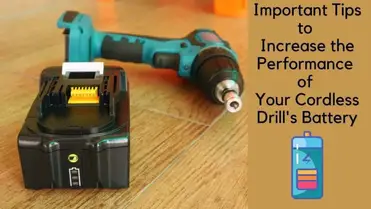
- Compact Drills: Milwaukee compact drills generally have a battery life of 3-5 hours per charge.
- Heavy-Duty Drills: Milwaukee heavy-duty drills offer a longer battery life, averaging around 5-7 hours per charge.
It is important to note that these battery life estimates are approximate and can vary depending on various factors such as the specific model, the type of projects you are working on, and the battery capacity. Additionally, it is always a good idea to have spare batteries on hand to ensure uninterrupted workflow.
When choosing a drill, it is recommended to consider your specific needs and the estimated battery life required for your typical projects. This comparison can serve as a helpful starting point in finding the right drill brand that offers the battery life you need.
Tips to Prolong Drill Battery Life
1. Proper Charging:
- Follow the manufacturer’s instructions for charging your drill battery.
- Avoid overcharging the battery, as it can reduce its overall lifespan.
- Do not charge the battery in extreme temperatures, as it can damage the cells.
2. Regular Maintenance:
- Clean the battery contacts regularly to ensure a good connection and performance.
- Inspect the battery for any signs of damage or wear, and replace it if necessary.
- Store the battery in a cool, dry place when not in use to prevent degradation.
3. Use the Right Settings:
- Avoid using high-speed or high-torque settings unnecessarily, as they can drain the battery faster.
- Use the appropriate drill bit or accessory for the task at hand to minimize strain on the battery.
4. Limit Continuous Use:
- Allow the drill battery to cool down between extended use to prevent overheating.
- If possible, use multiple batteries and alternate them to avoid excessive strain on a single battery.
5. Keep a Spare Battery:
- Invest in an extra battery or two, so you always have a backup for continuous use or in case of emergencies.
- Rotate between batteries regularly to prevent any single battery from being unused for long periods.
6. Avoid Full Discharge:
- Avoid completely draining the battery before recharging, as it can affect its overall lifespan.
- Recharge the battery when it reaches around 20-30% capacity to prolong its lifespan.
7. Check for Firmware Updates:
- Some drill battery models may have firmware updates available that can optimize performance and battery life.
- Check the manufacturer’s website periodically for any firmware updates and follow the instructions for installation.
8. Proper Disposal:
- When the drill battery reaches the end of its useful life, dispose of it properly according to local regulations.
- Take the battery to a designated recycling center or contact your local waste management authorities for guidance.
By following these tips, you can significantly prolong the lifespan of your drill battery and ensure optimal performance for all your drilling needs!
Signs that Indicate a Drill Battery Needs Replacement
Over time, drill batteries may begin to lose their ability to hold a charge, resulting in decreased performance and efficiency. If you notice any of the following signs, it may be time to replace your drill battery:
1. Reduced Run Time
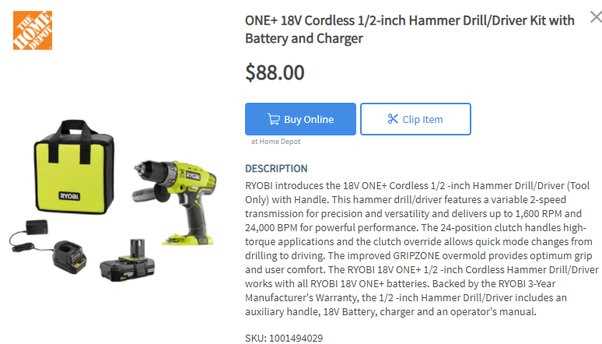
If your drill battery doesn’t last as long as it used to on a single charge, it’s a clear indication that the battery is wearing out. As the battery cells degrade over time, they become less efficient at storing and delivering power, resulting in shorter run times.
2. Slow Charging
If you notice that your drill battery takes significantly longer to charge fully, it could be a sign that the battery is reaching the end of its lifespan. As the battery cells deteriorate, they may struggle to accept and hold a charge, causing longer charging times.
3. Declining Power Output
As a drill battery ages, it may not provide the same level of power output as when it was new. If you find that your drill lacks the same strength and torque it once had, despite charging it fully, it may be due to a deteriorating battery.
4. Increased Heat Generation
If you notice that your drill battery gets unusually hot during use, it could indicate that the battery is nearing the end of its life. Over time, battery cells can deteriorate, leading to increased internal resistance and heat generation.
5. Difficulty Holding a Charge
If you charge your drill battery but find that it quickly loses its charge even when not in use, it could be a sign of a failing battery. When battery cells lose their ability to retain a charge, they may discharge rapidly, making it difficult to rely on the drill for extended periods.
6. Bulging or Leaking
If you notice any bulging or leaking from your drill battery, it is a clear sign that the battery needs to be replaced. These issues can indicate a severe internal problem and can potentially pose a safety hazard.
While it’s normal for drill batteries to eventually wear out and require replacement, regular maintenance and proper storage can help extend their lifespan. If you notice any of the above signs, it’s a good idea to invest in a new drill battery to ensure optimal performance and safety.
Different Types of Drill Batteries and Their Lifespan
When it comes to cordless drills, the lifespan of a drill battery can greatly affect the overall performance and convenience of the tool. Different types of drill batteries have different lifespans, which can depend on various factors such as the type of battery, usage patterns, and maintenance.
1. Nickel-Cadmium (NiCd) Batteries
- Lifespan: NiCd batteries typically have a shorter lifespan compared to other types of drill batteries. On average, they can last for about 2 to 3 years.
- Advantages: NiCd batteries are known for their durability and ability to handle high-drain applications. They also have a lower self-discharge rate compared to other battery types, meaning they can hold their charge longer when not in use.
- Disadvantages: NiCd batteries are susceptible to memory effect, which can reduce their overall capacity. They also contain toxic materials like cadmium, making them less environmentally friendly.
2. Nickel-Metal Hydride (NiMH) Batteries
- Lifespan: NiMH batteries have a longer lifespan compared to NiCd batteries. On average, they can last for about 3 to 5 years.
- Advantages: NiMH batteries offer higher energy density, allowing for longer run times. They are also more environmentally friendly than NiCd batteries as they do not contain toxic materials.
- Disadvantages: NiMH batteries have a higher self-discharge rate, which means they can lose their charge more quickly when not in use. They also have a lower tolerance for high temperatures.
3. Lithium-Ion (Li-Ion) Batteries
- Lifespan: Li-Ion batteries have the longest lifespan among the three types. On average, they can last for about 5 to 7 years.
- Advantages: Li-Ion batteries are lightweight, have a high energy density, and offer a longer runtime compared to other battery types. They also have a lower self-discharge rate and no memory effect.
- Disadvantages: Li-Ion batteries are more expensive compared to NiCd and NiMH batteries. They can also be more sensitive to high temperatures, which can affect their performance.
Conclusion
When choosing a cordless drill, it is important to consider the lifespan of the drill battery. While NiCd batteries may be more durable, they have a shorter lifespan and are less environmentally friendly. On the other hand, NiMH batteries offer a longer lifespan and are more eco-friendly, but they have a higher self-discharge rate. Li-Ion batteries have the longest lifespan and offer various advantages, but they tend to be more expensive. Ultimately, the choice of drill battery will depend on individual needs and preferences.
Comparing Lithium-ion and NiCad Drill Batteries
When it comes to choosing a drill battery, two common options are lithium-ion and NiCad. Both have their own advantages and disadvantages, and it’s important to understand the differences between the two before making a decision.
Lithium-ion Batteries
Lithium-ion batteries are becoming increasingly popular due to their numerous advantages. Here are some key points to consider:
- Longer Lifespan: Lithium-ion batteries typically last longer than NiCad batteries, both in terms of usage and overall lifespan.
- Lightweight: These batteries are known for their lightweight construction, making them easier to handle and reducing user fatigue.
- Higher Energy Density: Lithium-ion batteries provide more energy storage capacity compared to NiCad batteries, allowing for longer run times.
- No Memory Effect: Unlike NiCad batteries, lithium-ion batteries do not suffer from memory effect, meaning they can be charged at any time without negatively impacting their overall capacity.
- Faster Charging: Lithium-ion batteries typically have faster charging times compared to NiCad batteries.
NiCad Batteries
Although not as popular as they once were, NiCad batteries still have their place in certain applications. Here are a few key points to consider:
- Cheaper: NiCad batteries generally have a lower initial cost compared to lithium-ion batteries.
- Higher Discharge Rates: NiCad batteries are capable of delivering higher discharge rates, making them suitable for heavy-duty applications that require a lot of power.
- Colder Weather Performance: NiCad batteries perform better in colder temperatures compared to lithium-ion batteries.
Choosing the Right Battery
When choosing between lithium-ion and NiCad batteries, it’s important to consider your specific needs and intended use. If you value longer run times, faster charging, and overall longevity, then lithium-ion batteries are likely the better option. However, if you’re on a tighter budget and need higher discharge rates for heavy-duty tasks, then NiCad batteries may be more suitable.
Ultimately, the right choice will depend on your individual requirements and preferences. It’s important to weigh the pros and cons of each battery type before making a decision.
Frequently Asked Questions about Drill Battery Lifespan
1. How long does a drill battery last on one charge?
The lifespan of a drill battery on one charge can vary depending on several factors, including the type of battery, the brand of the drill, and the workload of the drill. In general, most drill batteries can last anywhere from 30 minutes to 2 hours on a single charge.
2. What factors can affect the lifespan of a drill battery?
Several factors can affect the lifespan of a drill battery:
- Usage: Regular and heavy use of the drill can cause the battery to drain more quickly, reducing its overall lifespan.
- Temperature: Extreme temperatures can affect the performance and lifespan of a drill battery. High temperatures can cause the battery to overheat, while low temperatures can reduce its capacity.
- Charging habits: Incorrect charging habits, such as leaving the battery connected to the charger for extended periods or using an incompatible charger, can negatively impact the battery’s lifespan.
- Quality: The quality of the battery itself, as well as the brand of the drill, can also play a role in determining its lifespan.
3. Can I extend the lifespan of my drill battery?
Yes, there are ways to extend the lifespan of your drill battery:
- Proper charging habits: Follow the manufacturer’s recommendations for charging the battery. Avoid overcharging or leaving the battery connected to the charger for extended periods.
- Storage conditions: Store the battery in a cool, dry place when not in use. Avoid exposing it to extreme temperatures.
- Proper usage: Avoid using the drill for extended periods without giving the battery time to cool down. Avoid using the drill on heavy loads that can cause excessive strain on the battery.
- Use compatible chargers: Use the charger that comes with the drill or a compatible charger recommended by the manufacturer to ensure proper charging and prevent damage to the battery.
4. How can I tell if my drill battery needs to be replaced?
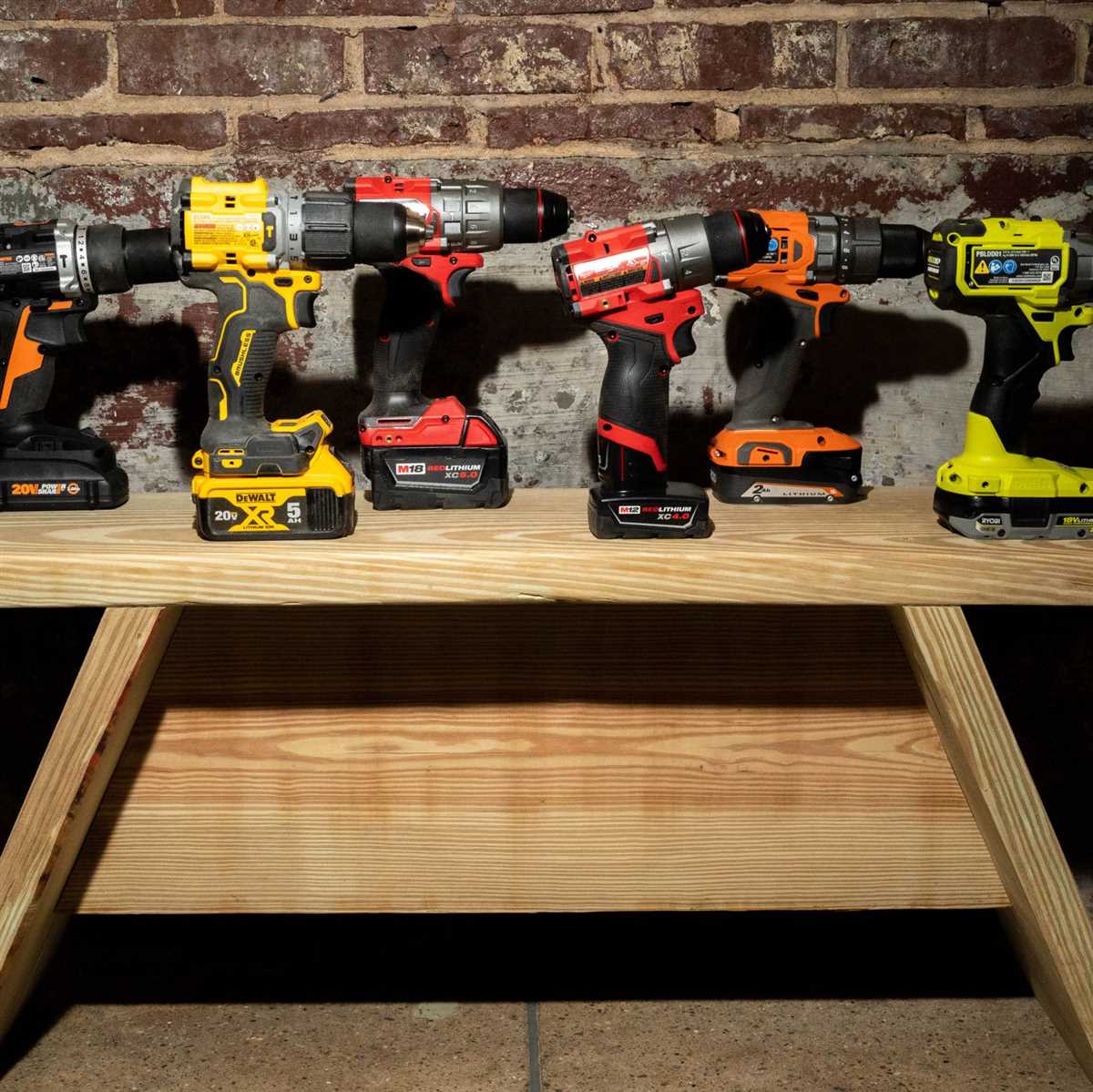
There are a few signs that may indicate it’s time to replace your drill battery:
- Reduced runtime: If the battery doesn’t last as long on a single charge as it used to, it may be a sign that it’s reaching the end of its lifespan.
- Failure to hold a charge: If the battery drains quickly or doesn’t hold a charge at all, it may be a sign of battery failure.
- Physical damage: Any visible damage to the battery, such as bulging, leaking, or corrosion, is a clear indication that it needs to be replaced.
5. Can I use third-party batteries with my drill?
While it is possible to use third-party batteries with your drill, it’s important to note that doing so may void the manufacturer’s warranty and could potentially result in compatibility or performance issues. It’s generally recommended to use batteries recommended or supplied by the drill manufacturer.
6. How often should I replace my drill battery?
The lifespan of a drill battery can vary, but on average, it is recommended to replace your drill battery every 2 to 3 years, depending on usage and performance. However, if you notice any of the signs mentioned above indicating battery failure, it’s best to replace it sooner.
7. How can I dispose of a drill battery?
Drill batteries, along with other rechargeable batteries, should not be disposed of in regular household waste. Instead, they should be taken to designated recycling centers or electronic waste collection sites. These facilities have the proper disposal methods to handle and recycle the batteries in an environmentally friendly manner.
8. Can I replace the cells in my drill battery?
Replacing individual cells in a drill battery can be challenging and may require specialized knowledge and equipment. It is generally not recommended for the average user to attempt replacing the cells themselves. It’s best to consult the manufacturer or a professional service center for battery cell replacements.
FAQ:
How long does a drill battery typically last on one charge?
A drill battery typically lasts between 1-4 hours on one charge, depending on the brand and model of the drill.
Can I extend the battery life of my drill?
Yes, you can extend the battery life of your drill by properly maintaining the battery, charging it fully before each use, and avoiding overcharging or exposing it to extreme temperatures.
What factors can affect the battery life of a drill?
Several factors can affect the battery life of a drill, including the type of material being drilled, the speed and torque settings used, and the age and condition of the battery.
Is it possible to replace the battery of a drill?
Yes, it is typically possible to replace the battery of a drill. Most drills have removable batteries that can be replaced with a new one, either by purchasing a replacement battery from the manufacturer or a third-party retailer.
Is it better to use a cordless drill or a corded drill?
It depends on the specific needs and preferences of the user. Cordless drills offer more portability and convenience, but their battery life can be a limitation. Corded drills provide consistent power as long as they are plugged into an electrical outlet, but their range of motion is limited by the length of the power cord.
Do all drills use the same type of battery?
No, not all drills use the same type of battery. Different brands and models may use different types of batteries, such as lithium-ion, nickel-cadmium, or nickel-metal hydride.
How long does it take to fully charge a drill battery?
The time it takes to fully charge a drill battery can vary depending on the brand and model of the drill and the capacity of the battery. On average, it can take anywhere from 1-4 hours to fully charge a drill battery.
Video:










